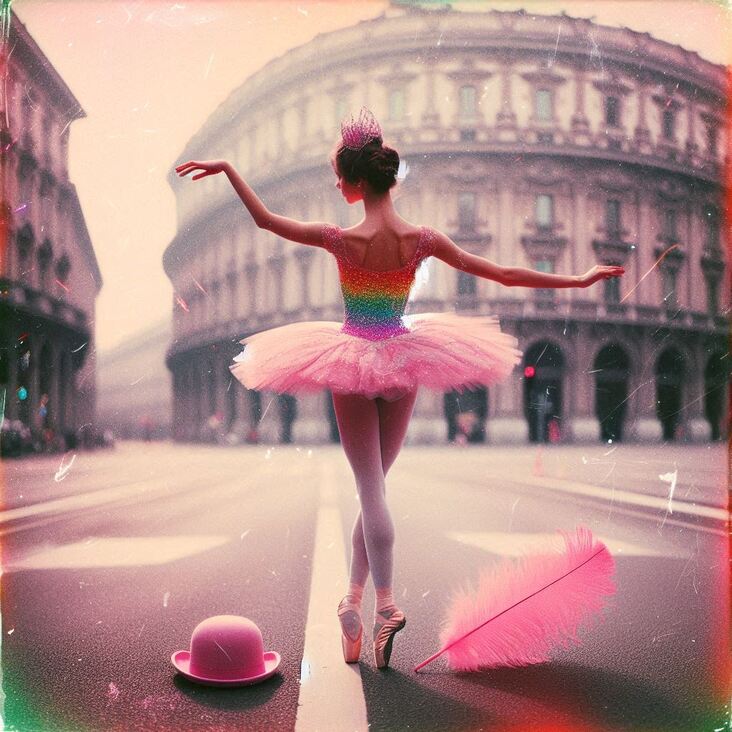
Hello, darlings! Emma here, your friendly neighbourhood pink tutu-wearing ballerina, back with another #TutuTuesday history lesson. Today, we're travelling through time to unravel the fascinating evolution of the iconic ballet tutu - an essential part of any ballerina's wardrobe, and, let's face it, the epitome of femininity!
Disclaimer: If you haven't read my previous posts, I might have mentioned I'm a time-travelling ballet aficionado. My love for tutus is matched only by my obsession with uncovering their fascinating history! I fund my exciting jaunts through time by dancing my way across the globe - from performing in the glittering theatres of New York to swirling across the stages of Paris - all in the name of tutus, of course!
It's May 23rd, 2023, and the world is bustling with activity. Spring has sprung, flowers are blooming, and I just arrived in sunny California - a state where ballet has a devoted following, and the tutu is certainly embraced with open arms! I just came from a gorgeous performance at the San Francisco Ballet, a world-class company known for their amazing technique and beautiful costumes.
Today's #TutuTuesday is all about understanding how the iconic, romantic, whimsical garment we know and love came to be. So, grab your favourite pink tutu and join me for a delightful voyage through time, from the early beginnings of the tutu to its stunning evolution!
Back to the roots:
The tutu’s journey began in the early 19th century, but it wasn't the fluffy, frothy vision we see today. The initial form was a romantica style, a flowing skirt that reached the ankles, worn for early ballet performances. It's not a stretch of the imagination to imagine the elegant movement and grace that would have been so stunning, though very different to what we know today!
As ballet itself evolved, so did the tutu. It started shortening, reflecting the growing emphasis on leg work and aerial skills, those captivating feats of athleticism that are the hallmark of ballet today.
By the 1830s, the tutu had evolved into a shorter, more structured design that emphasized the ballerina's legs and feet, and by the 1840s, it began to take on the iconic, bell-shaped form that we recognise. This era gave us the iconic, knee-length "Romantic" tutu which continues to hold a place in many ballet repertory performances. Think Tchaikovsky’s Swan Lake, a masterpiece!
Stepping into the spotlight:
The end of the 19th century saw the emergence of a different style: the "Classical" tutu. This design features multiple layers of tulle - light, airy, and ethereal - held in place by a stiff waistband. It created a voluminous and pleasing, full, layered design that would allow for grand movements with greater fluidity. The Classical Tutu gave ballet an incredibly unique, and often theatrical quality! This is a style still popular, especially in classic ballets.
With its incredible artistry, the Classical Tutu helped to further define the romantic and whimsical aesthetic of ballet. And you guessed it, this era saw even more beautiful performances and spectacular costuming designs, both on stage and within the costume shops, where I get some of my very best inspiration!
Enter the 20th century and its innovations!
Throughout the 20th century, tutus continued to evolve in response to new dance trends, such as neoclassical ballet, contemporary dance, and even, dare I say it, ballet street, those urban styles of dance which bring the best elements of street dance to the classical disciplines of ballet.
But no matter what trends come and go, the tutu remains an iconic symbol of dance. It symbolises the dedication and effort it takes to achieve those stunning movements.
Time-travelling through fashion history:
My time travels through the world of tutus have taken me back in time to see these beautiful designs evolve through each era. It is clear to me that each era brings something unique and wonderful to the story.
For instance, travelling back to the 1960s, a time known for revolutionary change, I saw a new approach to the tutu in ballets like "Giselle" and "Swan Lake". Designs were being adapted and modernised, incorporating new fabrics and techniques while maintaining those signature ballerina features! I was particularly captivated by the emergence of shorter, tighter tutus, like the ones seen in contemporary dance! I believe that tutus today represent a magnificent combination of heritage and innovation, echoing the constant evolution of ballet itself.
Pink tutus and my own little touch!
I always advocate for Pink tutus. They represent joy, happiness, and femininity. But in this time I find the traditional tutus to be even more versatile and appealing in colour, and not just pink!
If you ask me, tutus should never go out of style. Their lightness, delicacy and feminine silhouette make them utterly enchanting, particularly the graceful "Romantic" and "Classical" tutu styles. Let’s be honest, isn't that the epitome of dance?
Final words:
The ballet tutu has a long and illustrious history, a journey filled with transformations and creative expression, and all those things make me, the pink-loving time-travelling ballerina, eternally delighted! They captivate audiences across the globe and serve as a symbol of artistry, elegance, and graceful athleticism. Whether you are a dancer or a casual admirer of the art form, it is impossible to deny the unique appeal and elegance of the tutu! So why not rock a tutu, girls? Who knows where it will take you?!
And of course, you can catch all of my time-travelling exploits, fashion findings and all the pink tutu joy in the world here, on www.pink-tutu.com each week on #TutuTuesday. It’s going to be a fabulous journey for all us tutu lovers.
Catch you next time, darlings!
Emma xxx

